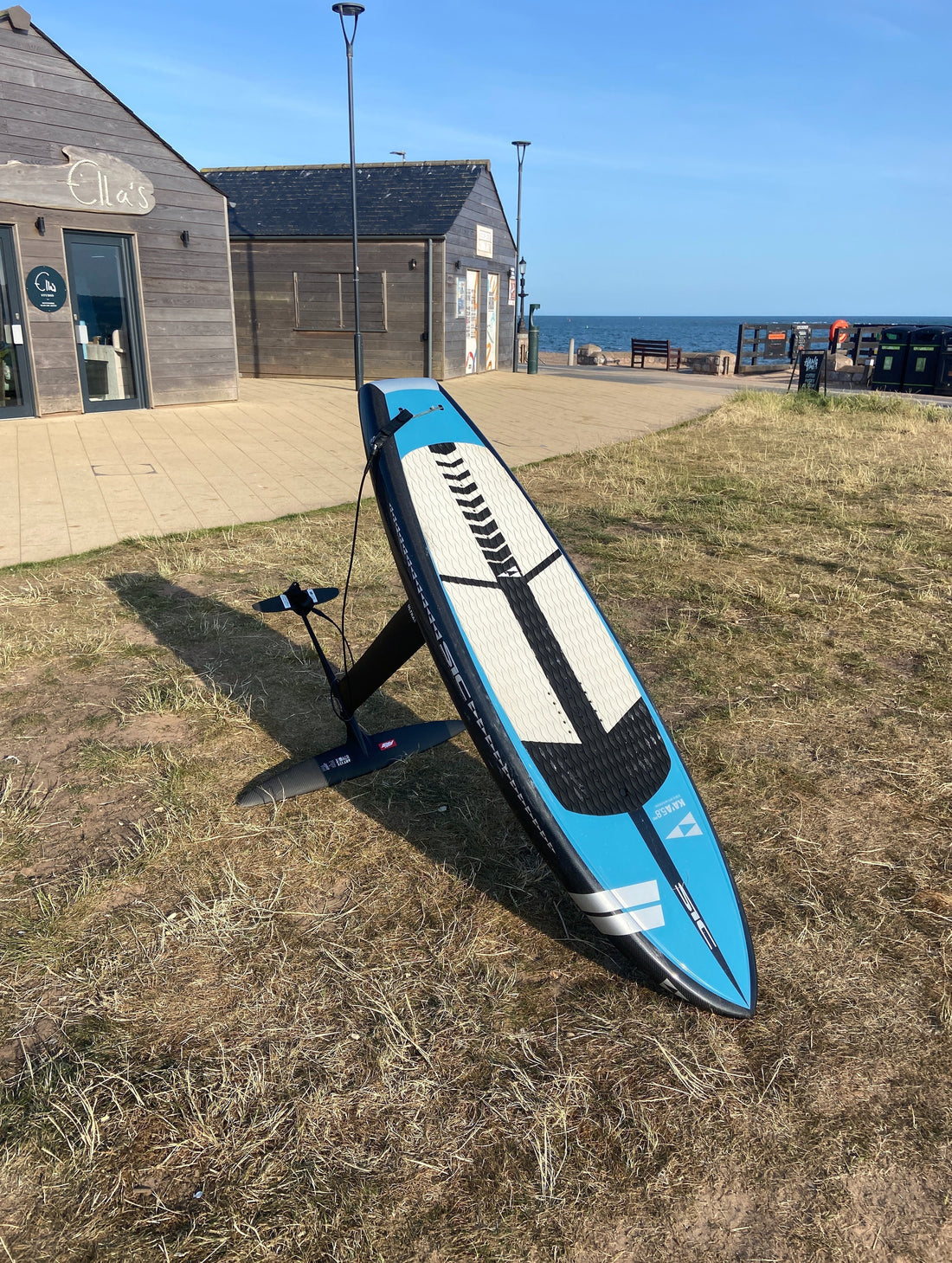
Midlength Foil Boards for winging and parawinging
Share
The Downwind discipline gaining popularity made designers start re-thinking board design, and Dave Kalama's Barracuda was the catalyst that began it all. The 'Midlength' idea is an evolution of these longer, pointier downwind SUP foilboards, sizing them down for our other foiling disciplines and bringing the same advantages with them - increased board speed with less effort, in theory giving us the ability to get up on smaller foils and/or in lighter conditions
Midlengths have been around for a couple of years now and really came into their own last year. They were one of the "big things" for the year. Now the dust has settled and the category is well serviced there are two clear types of board within what could be described as a midlength. The general definition is a board which is longer and narrower than the classic compact / stubby foil board shape.
A lot of midlengths like the new Appletree Midlength of the SIC Maui Ka'a are very slim with the tails of the board being really quite pulled in. This narrow tail really helps the board maintain speed but sacrifices stability. These boards are reserved for intermediate and above riders as they do require good balance and technique.
Then there are more generous shapes like the AXIS Blast and the Appletree Appleslice V3. These boards are obviously longer and narrower than previous models like the AXIS Froth and Appletree Appleslice V2, but they still maintain pretty full tails. This more square tail keeps a lot more volume at the back of the board and really helps with that initial stability. We would have no problem recommending the Blast in a decent volume as someone's first board. This is very much not the case for the boards with more narrow tails.
Most of the above is said with winging in mind. When we look at parawinging then there are a few things to consider. The main one is volume and that is that with a parawing you cannot rely on the wing for stability to get onto the board. For this reason many will want to go for a larger size or more stable design that they would for winging. That said - as riders progress, as always they will build the skills to manage smaller boards.
Do I need one?
Its not so much needing to upgrade straight away, rather a natural progression when it comes to changing your current board when the time is right. You'll inevitably end up looking at something longer and slimmer than you had previously anyway, no matter what brand you decide - its just the way the industry has gone and we're all for it.
As an intermediate+ winger who's comfortable on a body weight volume board looking for the next step - a slight drop in volume onto a pulled in, more aggressive Midlength such as the ones mentioned above is most likely. Gone are the days of riders chasing the sinker board status so much - its simply too much of a pain in the arse for the majority of UK wingers and you may well end up wanting a larger board for shakier conditions anyway.
Although its early days still, we've had a couple of eye opening, glory sessions Parawinging on a slightly less than bodyweight 70L SIC Ka'a which crosses over as a great wing foil board too. Its nimble in the carves on the wave face due to its slim width, takes off early enough with its increased length and yet has enough volume to not be too uncomfortable in under powered winging or well powered Parawinging, while we're learning. Increasing volume from a 55L to a 70L hasn't been much of a hinderance at all winging and has yet made parawinging more of an option where another board would likely have been needed above the previous 55L wing board we had on demo.
